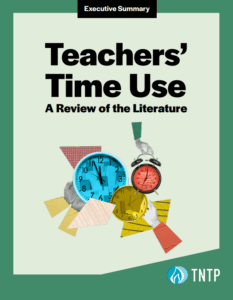We know great teachers are important: Research—not to mention our own school experiences—tells us so. And as the recent verdict in the Vergara v. California trial made clear, equal access to great teachers is every child’s constitutional right, at least in the state of California.
The plaintiffs in the Vergara trial challenged school staffing policies that have historically presented barriers to making that right a reality for California kids. In Tennessee, where I live and work, equal access to effective teachers isn’t yet a reality either: Our highest-poverty schools still have a greater concentration of ineffective teachers than their more affluent counterparts.
We’re not alone. Earlier this month, Secretary of Education Arne Duncan announced a plan to focus on equitable distribution of great teachers across the country. All states will now have to submit plans for addressing teacher distribution by next spring. So how do we get the very best teachers to come to the schools that arguably need them the most?
Changing staffing policies like those challenged in the Vergara trial is of course part of the solution; so is better training and support for all teachers, and career pathways and compensation systems that encourage highly effective teachers to serve in high-poverty schools.
But there’s a critical piece of the equitable distribution puzzle that is too often underemphasized: school leadership.
Great teachers want to work for great school leaders. They aren’t any different from other professionals in this respect; whatever we do, most of us want to work with and for people we respect, and who we trust will support us well. Our research shows that schools with great principals, who build strong, supportive instructional cultures for their teachers and hold teachers and students to high expectations, do a better job of retaining high-performing teachers, regardless of student demographics. So it stands to reason that great principals can also be a critical incentive to attract top teachers to hard-to-staff schools.
Fortunately, districts across the country are starting to train their eyes on improving school leadership as a way to recruit and retain the best teachers and improve instruction. On a recent webinar hosted by Education Week, I listened to Terry Grier, Superintendent of Houston Independent School District, describe how HISD has had some success using financial incentives to bring great teachers to their underperforming schools, but that the best incentive has proven to be an effective leader.
We’ve seen the same thing here in Tennessee. In Shelby County, the district has re-vamped its principal selection and evaluation processes to include components that assess principals’ abilities to identify teachers who deliver instruction at the highest level and to build school environments that prioritize smart retention of those teachers. By aligning principal and teacher evaluation, the district is making a clear statement that the buck stops with school leaders when it comes to the quality of instruction in their buildings.
This approach is showing a marked effect on schools like Treadwell Middle School in Memphis. In the summer of 2013, the district appointed a new instructional leader to lead turnaround efforts in the building. With her track record of success, the principal was able to galvanize a corps of high-performing teachers to join Treadwell and take on the challenge of improving this chronically under-performing school. It’s early still, but preliminary results show significant student learning gains in both reading and math, and suggest that Treadwell is on track to meet its goal of moving from the bottom 5 percent of schools in Tennessee to the top 25 percent in student achievement in just a few short years.
Another approach is finding new approaches to principal training. In Philadelphia and Camden, NJ, the districts have partnered with TNTP to roll out intensive principal residencies. There, the goal is to create pipelines of innovative school leaders who can inspire others to embrace their instructional visions and build school cultures that focus on dramatically improving student achievement. In building our own principal training program, we’ve learned a lot from the folks at New Leaders, who have been doing this work for more than a decade.
To make good on the promise of delivering truly equal access to great teachers for all students, states and districts should follow the lead of places like these, and make a strong investment in “building their ships” at the school leadership level.
We simply don’t have five, 10 or 50 more years to see real change in our country’s most struggling schools. Now is the time to prioritize the conversation about the role great school leaders can and should play in addressing the equitable distribution challenge. My hope is that by the time the Vergara trial winds its way through the inevitable appeals process—and hopefully leads to real policy changes in California and elsewhere—we’ll also have plans in place to make sure we have great leaders in every school. Teachers and students deserve nothing less.








